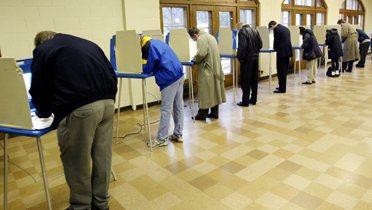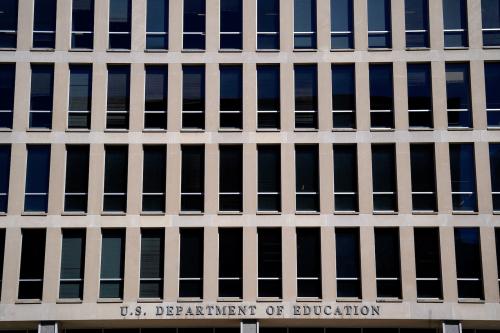Americans are more polarized than at any point in recent history. On issue after issue—abortion, the Affordable Care Act, or just about anything else— Democrats stand on one side and Republicans stand on the other. It can be difficult for leaders to build consensus around policy when the two sides each have their own base of support. But is the public so divided over school issues?
Last year, Education Next conducted a poll asking Americans about 17 education issues. On eight of these issues, there is no evidence that parties differ. Democrats are no more or less supportive than Republicans when it comes to universal vouchers, vouchers for students in failing schools, tax credits for donations to scholarship programs for private schools, higher pay for teachers in hard to staff subjects, higher pay for teachers in hard to staff schools, and awarding tenure on the basis of student performance.
There are differences on other issues—increasing spending, raising teacher pay, government funded universal preschool, government funded preschool for low income families, charter schools, vouchers for low-income families, merit pay, tenure, and Common Core—but these differences hardly pit the parties in opposing corners of the ring. In only one case does the majority from one party oppose the majority from the other. Nearly three-fourths of Democrats favor more spending on public schools, and 54 percent of Republicans oppose it.
More typically, one of the parties musters a majority while the other splits. For example, 66 percent of Republicans oppose government funded vouchers for students from low-income families, but 42 percent of Democrats oppose and 45 percent support. For two issues, majorities of both parties are on the same side despite a gap in support. Sixty two percent of Republicans favor merit pay, but so do 54 percent of Democrats. Seventy one percent of Democrats want to raise teacher pay; so do 52 percent of Republicans.
Without partisan division surely the door is open for bipartisan school reform? Not exactly. The lack of polarization on school issues probably has more to do with confusion than consensus.
The opinions that most Americans express on school issues are not well-informed, not organized in any coherent way, and not consistent over time. The 2014 survey contained factual questions about Common Core. Nearly two-thirds of respondents had either never heard of the standards or answered “don’t know” to the factual questions. In 2013 another survey asked Americans factual questions about charter schools. Half of the respondents said they did not know the answers while another 20 to 30 percent gave the wrong answers. Other past surveys have shown that Americans consistently underestimate per-pupil spending and teacher salaries.
If a coherent belief system underlay the opinions expressed on the 2014 survey, we could expect that a person would take similar positions on similar issues. They do not. Knowing where someone stands on charter schools does not reveal much about where they stand on vouchers or merit pay, much less tenure, testing, or spending. Responses across these issues are weakly correlated (the average pairwise correlation is 0.16 and all but a handful fall below 0.25).
Finally, many individuals change their opinion quickly. Each year, the Education Next surveys include a sample of respondents from the previous survey. With one important exception (Common Core), aggregate opinion is relatively stable. Yet, this aggregate stability masks flux at the individual level. For example, on merit pay and charter schools just 60 percent and 57 percent, respectively, come down on the same side in 2014 as they did in 2013. Only 51 percent take the same side on vouchers for students in low-income families in both years. These changes appear to be random. People are not changing their minds so much as just changing their responses without giving the issue much “mind” in the first place.
These are the trademarks of what public opinion scholars call “non-attitudes,” uninformed and haphazard responses without any real underlying opinion. This occurs when the public has not given an issue much attention. Americans may value education, but as an issue it is not at the forefront of their minds. When asked what they think is the most important issue facing the nation, only about five percent say education.
This murky ground of confusion is unlikely to make a solid foundation for consensus. Typically when the public starts paying attention to an issue, they look to their party leaders and fall in line accordingly. As they learn about the debate, confusion turns into polarization. It is unsurprising that the biggest partisan gap here concerns spending, an issue that easily taps into a familiar broader debate between parties. We are now seeing parties polarize over the Common Core as well. If issues such as testing, charters, or preschool seize the public mind, they may soon follow the same path.
The Brookings Institution is committed to quality, independence, and impact.
We are supported by a diverse array of funders. In line with our values and policies, each Brookings publication represents the sole views of its author(s).




